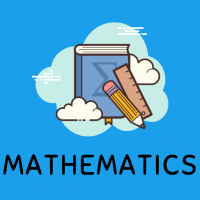Class 9 Exam > Class 9 Questions > The option which is not a solution of the euq...
Start Learning for Free
The option which is not a solution of the euqation 2x + 3y = 6, is :
- a)(3, 0)
- b)(0, 2)
- c)(–3, 4)
- d)(1, 1)
Correct answer is 'D'. Can you explain this answer?
Most Upvoted Answer
The option which is not a solution of the euqation 2x + 3y = 6, is :a)...
The option which is not a solution of the equation 2x + 3y = 6 is (c) (2, 1).
Free Test
| FREE | Start Free Test |
Community Answer
The option which is not a solution of the euqation 2x + 3y = 6, is :a)...
No you are wrong answer is c . because , if u take LHS that is 2x + 3y and u put value in it . u will get 6

|
Explore Courses for Class 9 exam
|

|
Similar Class 9 Doubts
Question Description
The option which is not a solution of the euqation 2x + 3y = 6, is :a)(3, 0)b)(0, 2)c)(–3, 4)d)(1, 1)Correct answer is 'D'. Can you explain this answer? for Class 9 2025 is part of Class 9 preparation. The Question and answers have been prepared according to the Class 9 exam syllabus. Information about The option which is not a solution of the euqation 2x + 3y = 6, is :a)(3, 0)b)(0, 2)c)(–3, 4)d)(1, 1)Correct answer is 'D'. Can you explain this answer? covers all topics & solutions for Class 9 2025 Exam. Find important definitions, questions, meanings, examples, exercises and tests below for The option which is not a solution of the euqation 2x + 3y = 6, is :a)(3, 0)b)(0, 2)c)(–3, 4)d)(1, 1)Correct answer is 'D'. Can you explain this answer?.
The option which is not a solution of the euqation 2x + 3y = 6, is :a)(3, 0)b)(0, 2)c)(–3, 4)d)(1, 1)Correct answer is 'D'. Can you explain this answer? for Class 9 2025 is part of Class 9 preparation. The Question and answers have been prepared according to the Class 9 exam syllabus. Information about The option which is not a solution of the euqation 2x + 3y = 6, is :a)(3, 0)b)(0, 2)c)(–3, 4)d)(1, 1)Correct answer is 'D'. Can you explain this answer? covers all topics & solutions for Class 9 2025 Exam. Find important definitions, questions, meanings, examples, exercises and tests below for The option which is not a solution of the euqation 2x + 3y = 6, is :a)(3, 0)b)(0, 2)c)(–3, 4)d)(1, 1)Correct answer is 'D'. Can you explain this answer?.
Solutions for The option which is not a solution of the euqation 2x + 3y = 6, is :a)(3, 0)b)(0, 2)c)(–3, 4)d)(1, 1)Correct answer is 'D'. Can you explain this answer? in English & in Hindi are available as part of our courses for Class 9.
Download more important topics, notes, lectures and mock test series for Class 9 Exam by signing up for free.
Here you can find the meaning of The option which is not a solution of the euqation 2x + 3y = 6, is :a)(3, 0)b)(0, 2)c)(–3, 4)d)(1, 1)Correct answer is 'D'. Can you explain this answer? defined & explained in the simplest way possible. Besides giving the explanation of
The option which is not a solution of the euqation 2x + 3y = 6, is :a)(3, 0)b)(0, 2)c)(–3, 4)d)(1, 1)Correct answer is 'D'. Can you explain this answer?, a detailed solution for The option which is not a solution of the euqation 2x + 3y = 6, is :a)(3, 0)b)(0, 2)c)(–3, 4)d)(1, 1)Correct answer is 'D'. Can you explain this answer? has been provided alongside types of The option which is not a solution of the euqation 2x + 3y = 6, is :a)(3, 0)b)(0, 2)c)(–3, 4)d)(1, 1)Correct answer is 'D'. Can you explain this answer? theory, EduRev gives you an
ample number of questions to practice The option which is not a solution of the euqation 2x + 3y = 6, is :a)(3, 0)b)(0, 2)c)(–3, 4)d)(1, 1)Correct answer is 'D'. Can you explain this answer? tests, examples and also practice Class 9 tests.

|
Explore Courses for Class 9 exam
|

|
Signup to solve all Doubts
Signup to see your scores go up within 7 days! Learn & Practice with 1000+ FREE Notes, Videos & Tests.

























